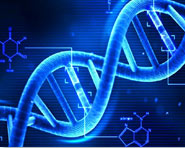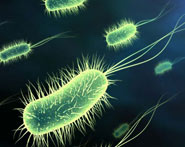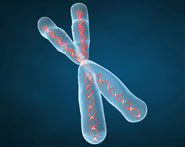


 النبات
النبات
 الحيوان
الحيوان
 الأحياء المجهرية
الأحياء المجهرية
 علم الأمراض
علم الأمراض
 التقانة الإحيائية
التقانة الإحيائية
 التقنية الحيوية المكروبية
التقنية الحيوية المكروبية
 التقنية الحياتية النانوية
التقنية الحياتية النانوية
 علم الأجنة
علم الأجنة
 الأحياء الجزيئي
الأحياء الجزيئي
 علم وظائف الأعضاء
علم وظائف الأعضاء
 الغدد
الغدد
 المضادات الحيوية
المضادات الحيوية|
Read More
Date: 10-5-2016
Date: 18-3-2021
Date: 25-12-2015
|
DNA can also itself be chemically modified to amplify or sup press transcription. CpG sites within gene promoter regions can be chemically modified by methylation enzymes called DNA methyl transferases (DNMTs), which decrease DNA binding of RNA polymerase and associated transcription factors. Hypermethylation has been observed in bone marrow cells of patients with myelodysplastic syndromes (MDSs), and the degree of DNA hypermethylation correlates with disease stage. In MDSs, the promoters of genes that are important for myeloid differentiation are hypermethylated, repressing their transcription and inhibiting proper maturation of the myeloid lineages. Hypomethylating agents such as azacitidine and decitabine can induce remission and may prolong survival in some MDS patients.
The regulation of gene expression by modification of chroma tin conformation or DNA itself is termed epigenetic because it tunes cell function without altering the nucleotide sequence of the DNA. Regulation and function of the epigenome and their role in hematopoiesis and diseases thereof are described in Chapter 3 and reviewed in Cullen et al.[1] Examples of hematologic malignancies driven by disordered epigenetic regulation include MDSs and acute myeloid leukemia (AML), with mutations in the DNMT3A gene observed in approximately 5% of MDSs and approximately 20% of AML cases. DNMT3A mutations confer a worse prognosis in AML. The ten eleven-translocation methylcytosine dioxygenase member, TET2, catalyzes hydroxymethylation of cytosines in DNA and results in demethylation of DNA; TET2 is mutated in AML, MDSs, chronic myelomonocytic leukemia (CMML), and other myeloproliferative neoplasms (MPNs), and all mutations represent loss-of-function mutations. Both DNTM3A and TET2 mutations, together with mutations in other chromatin modifiers such as ASXL1, can widely regulate gene expression and are often present in clonal hematopoiesis, preceding onset of frank malignancy.
References
-------------
[1] Cullen SM, Mayle A, Rossi L, Goodell MA. Hematopoietic stem cell development: an epigenetic journey. Curr Top Dev Biol. 2014;107:39–75.



|
|
|
|
حقن الذهب في العين.. تقنية جديدة للحفاظ على البصر ؟!
|
|
|
|
|
|
|
علي بابا تطلق نماذج "Qwen" الجديدة في أحدث اختراق صيني لمجال الذكاء الاصطناعي مفتوح المصدر
|
|
|
|
|
|
|
ضمن برنامج تأهيل المنتسبين الجدد قسم الشؤون الدينية يقدم محاضرات فقهية وعقائدية لنحو 130 منتسبًا
|
|
|